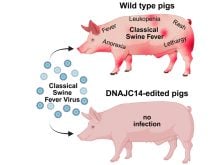ST. LOUIS, Mo. (Staff) — There’s a stark contrast between how U.S. oilseed producers and their wheat farming counterparts have chosen to deal with Canadian competition.
As the Canadian and U.S. canola industry associations met recently, the president of the American Soybean Association dropped in — not to threaten border controls — but to wish them well and encourage all three groups to work toward common goals.
“You folks are really showing leadership in your industries as far as all of us working together,” said the soybean president Larry Diedrich.
Read Also

Organic farmers urged to make better use of trade deals
Organic growers should be singing CUSMA’s praises, according to the Canadian Chamber of Commerce.
His message was one of tolerance toward an oilseed he readily concedes is in big demand in the U.S.
“At this point as growers, we see it because there is demand for canola, and U.S. producers are not at this point willing to produce canola,” Diedrich told reporters.
He said the U.S. soybean industry hasn’t even discussed the possibility of trying to stem the flow of canola, which now has about five percent of the U.S. vegetable oil market share. “I’m not saying that discussion won’t come up at some point, but it certainly hasn’t at this point,” Diedrich said.
Canola has higher oil content
It’s not that Diedrich believes the oilseed trading ground is entirely fair. He said U.S. soybean farmers have lost market share in Japan because of that country’s highly subsidized oilseed crushing bias. The Japanese subsidies have prompted crushers in that country to turn to canola, not because of quality, but because its seed has a higher oil content than soybeans.
But he said he’s not familiar enough with Canadian farm programs to determine whether the commodity is unfairly subsidized.
For now, Diedrich said his industry is trying to become more competitive in the health-driven consumer market by developing a soybean low in saturated fat.
“Our association has always been very much open trade, free trade … that’s just been a traditional philosophy of our organization,” Diedrich said. “It’s very difficult to be that way philosophically, and then when you get free trade say ‘no, we meant free trade but not free trade coming in.’
“We realize that it’s a two-way street and we have to be competitive in order for us to survive,” he said.
There is also an important difference in the wheat and oilseed trade between the two countries. With wheat, the trade flow is primarily south.
In 1992-93, Canada imported 600,000 tonnes of soybean meal compared to the 505,000 tonnes of canola meal and 300,000 tonnes of canola oil it exported to the U.S.
May become an issue
Diedrich said the flow of canola products into his country could become more of an issue with soybean growers when the U.S. Export Enhancement Program is revised to meet new trade rules under the GATT: “We are going to lose 80 percent of our EEP bonuses within the six years.”
That means the U.S. could be faced with more soybean oil to dispose of domestically. But Diedrich said a major portion of the estimated $50 million a year that will be raised under a new national soybean checkoff in the U.S. will go to finding new uses for soybeans.
Diedrich said the possibilities emerging are endless. They range from products such as biodiesel to a marble-like stone made from soyflour and recycled newspapers.
“I think the important lesson here is … every time you run into a challenge like this, rather than just throw up a tariff barrier, you try to address what the problem really is,” he said.














